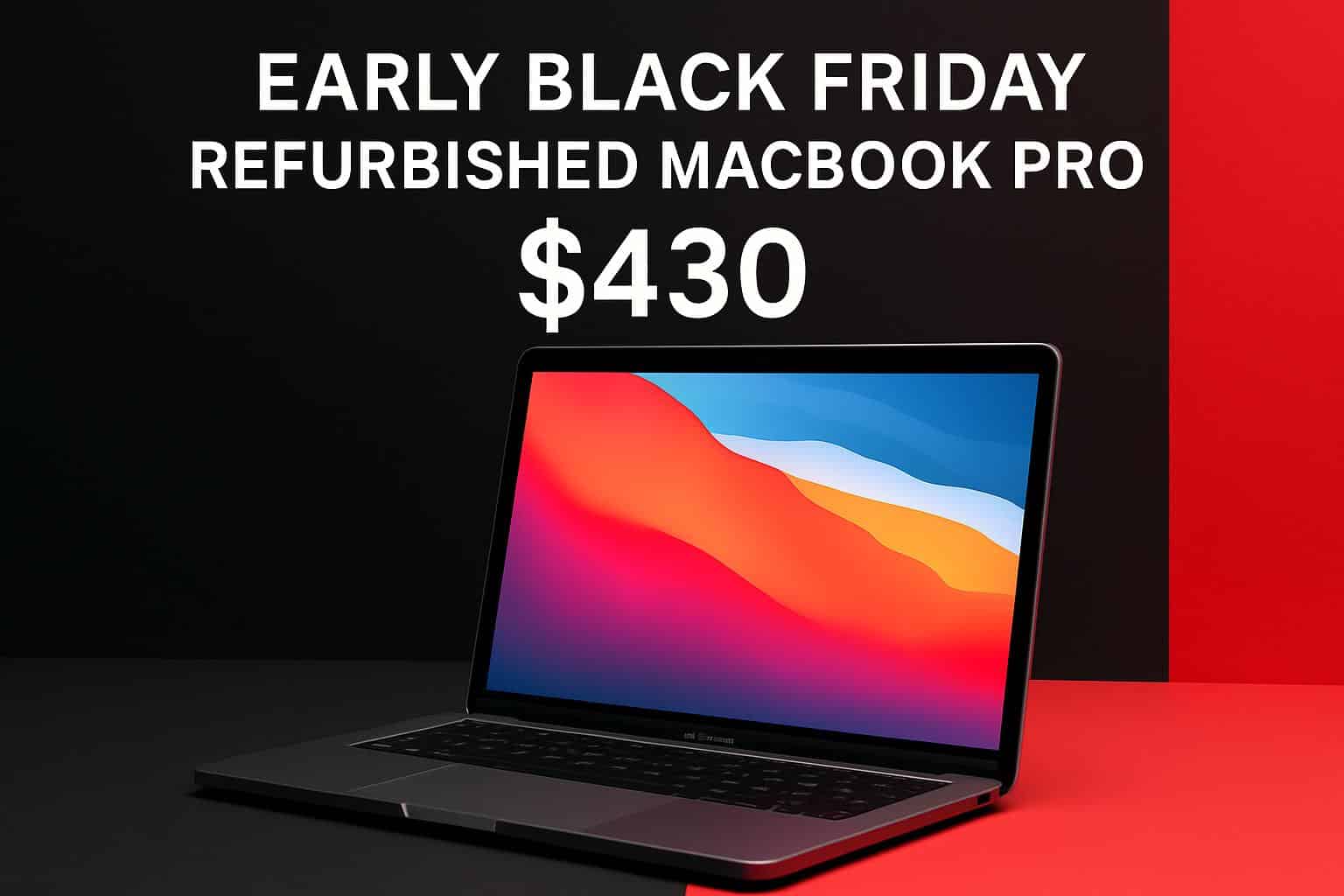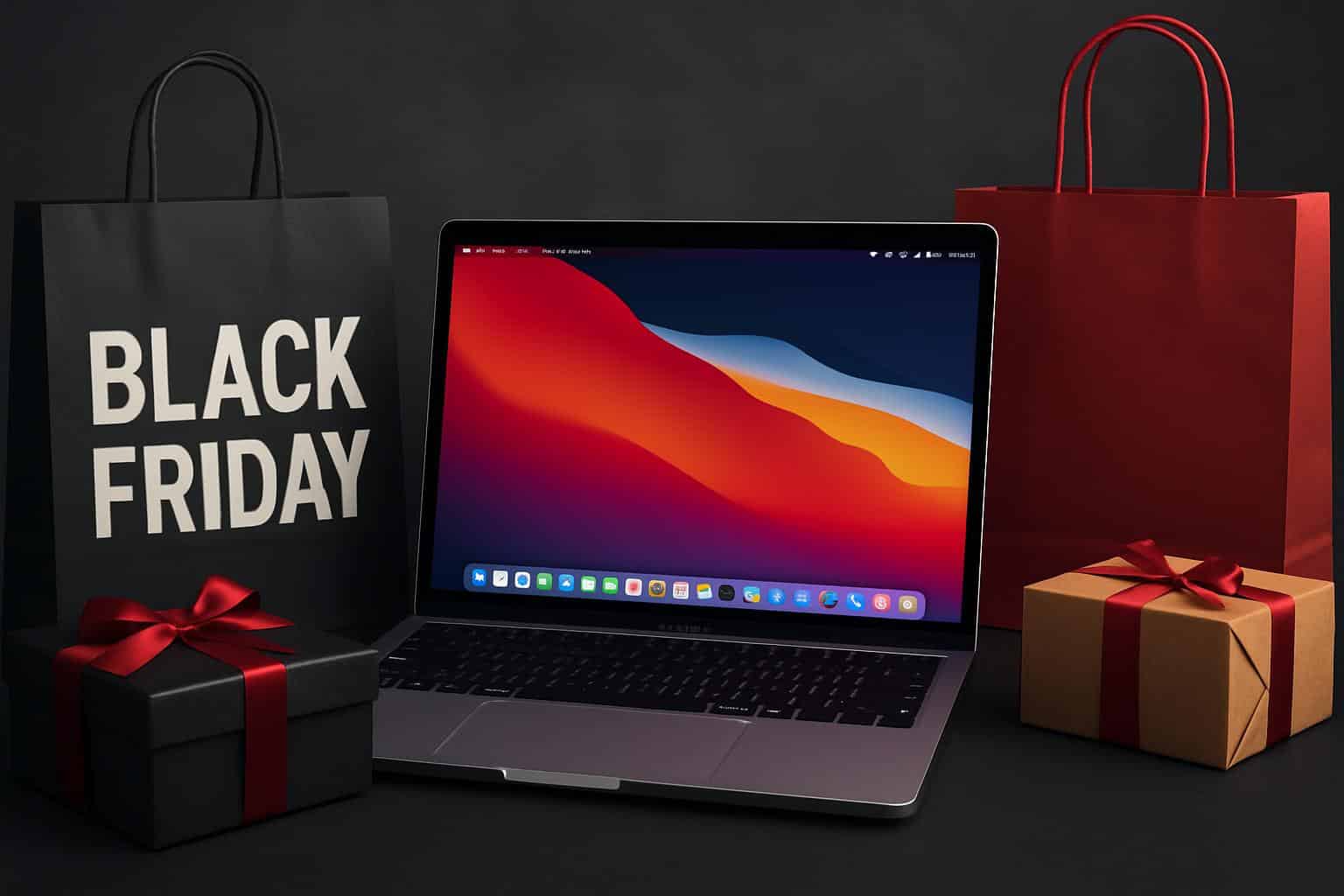Black Friday-level pricing has arrived early on a 13-inch MacBook Pro from 2020, and the figure in question is tough to pass up: approximately $430 for a grade A refurbished model with a 10th Gen Intel Core i5, 16GB of RAM, a 1TB SSD and Apple’s now-discontinued Touch Bar. For the curious or for those in search of an upgrade from an aging laptop without spending four figures, this is a tempting way station between budget and premium.
What $430 Will Get You on a Refurbished MacBook Pro
This configuration is at the productivity sweet spot: a quad-core 10th-generation Intel Core i5 from Intel combined with 16 gigabytes of memory provides plenty of headroom for dozens of browser tabs, Office or Google Workspace, Slack, Zoom and light creative work. The 1TB SSD is the headline — a lot of entry-level systems still come with a paltry 256GB or 512GB, which can fill up in no time at all if you’ve ever used it to stash photos, RAW files, Xcode projects and so on.

Body-wise, that 13.3-inch Retina display with True Tone is still an excellent panel for its size class, while the Magic Keyboard (new in 2020) puts a stop to the reliability complaints that plagued the butterfly keys of old. You also get Thunderbolt 3/USB‑C ports for fast external storage and displays, as well as the Touch Bar, which can morph into contextual controls for Photoshop timelines or Final Cut scrubbing or Safari shortcuts. Apple has discontinued the Touch Bar on current models, so this is one of the last practical places you can try it.
Offered as grade A refurbished, the machine is said to be in excellent condition with no or very little cosmetic damage and comes with a 30‑day warranty. That safety net certainly counts; Consumer Reports has long recommended looking into generous return windows and/or written warranties when buying refurbished electronics.
How It Compares to New Macs with Apple Silicon
Apple’s latest MacBook Pros, on M‑series chips, make quick work of Intel-era models in both battery life and raw performance. In crude terms, Apple’s first-gen M1 offers about 50–70% higher multicore scores than, say, a 10th Gen Intel Core i5 in cross-platform benchmarks, with the M2 and M3 pulling ahead. If you are editing 4K video on the daily or training machine learning models, an M‑series Mac is obviously the pick.
That said, for everyday workloads—writing, spreadsheets, Zoom chats and even Lightroom culling and moderate code compiles in the context of small projects from a Node.js/Express app all the way down to microcontroller C—the 2020 i5 holds up perfectly. macOS Sequoia is compatible with 2018 and newer MacBook Pro models, so it’s still within Apple’s confines for current operating systems. Intel Macs still hold one niche advantage: native Boot Camp support for dual‑booting Windows, which some developers and IT pros still want to whip out to test or run legacy apps.
Expect trade-offs. Battery life will be modest next to the M‑series machines, and the fans will spin up during sustained load. But at this price, the 16GB/1TB combo ameliorates a lot of waiting—for most people, shortage of storage and swapping are far worse for system feel than is having last year’s CPU.
The Case for Refurbished Laptops and Real Savings
Mattresses and used urine aside, you can generally expect to pay 30–60% less for refurbished electronics based on marketplace analyses from retailers specializing in certified renewals. Price tracking on enthusiast marketplaces such as Swappa frequently shows 13‑inch 2020 MacBook Pros with 1TB of storage selling for hundreds more than this deal, particularly if they’re in top cosmetic form.

There is the environmental math, which also tilts in favor of reuse. The United Nations’ Global E‑waste Monitor documents tens of millions of metric tons of e‑waste generated every year, and Apple’s own environmental progress updates acknowledge that the lion’s share of a device’s lifetime emissions takes place during manufacturing. Increasing the service life of a laptop means that it emits fewer carbon emissions in its lifetime.
The answer is certification and testing. Find product listings that are data-wiped, tested for keyboard and display quality, have batteries of graded health cycle count, along with a clear return procedure. This offer receives an overall grade of A and includes a 30‑day warranty, which is the minimum that buyers should demand to ensure they are getting a healthy computer.
Buyer Checklist Before You Click Buy on This Deal
- Battery health: Request an estimate of cycle count or assurances that the battery meets vendor standards; replacements are doable but they factor into total cost.
- Ports and power: Make sure the USB‑C charger is fast enough, check for the quality of included cables, and ensure that the listing has two or four Thunderbolt 3 ports.
- Keyboard and display: No backlight bleed or visible staining or ghosting on the panel, and all keys working fully (especially the Touch Bar and Touch ID).
- Warranty and returns: Thirty days is enough of a runway to do serious stress testing; run diagnostics, monitor thermals during updates, and put the machine through your daily workflow right away.
Who This Refurbished MacBook Pro Deal Is For
Anyone feeding data from large libraries to a student, writer or photographer will also have the pleasure of the dense 1TB of fast storage, and frequent travelers who don’t like juggling drives are candidates for this configuration as well. It’s also a good choice for those who still require an Intel Mac for certain Windows dual‑booting tasks or niche plugins that remain unoptimized for Apple Silicon.
But if you need marathon-level battery life, plug-and-play advanced AI tooling or to regularly render high-bit-rate video, an M‑series MacBook is still the better long-term play.
For everyone else, a nicely vetted $430 MacBook Pro is a rare trifecta of good value: mature macOS hardware, lots of storage and just enough CPU muscle to feel snappy where it matters.
The deal is good for a new-in-box item, which lists at $429.97 plus $4.99 shipping without a coupon. Like with most restored units, stock is liable to come and go quickly when condition and capacity line up at this price point — if it’s what you need, testing it within the return window is the wise next call.

